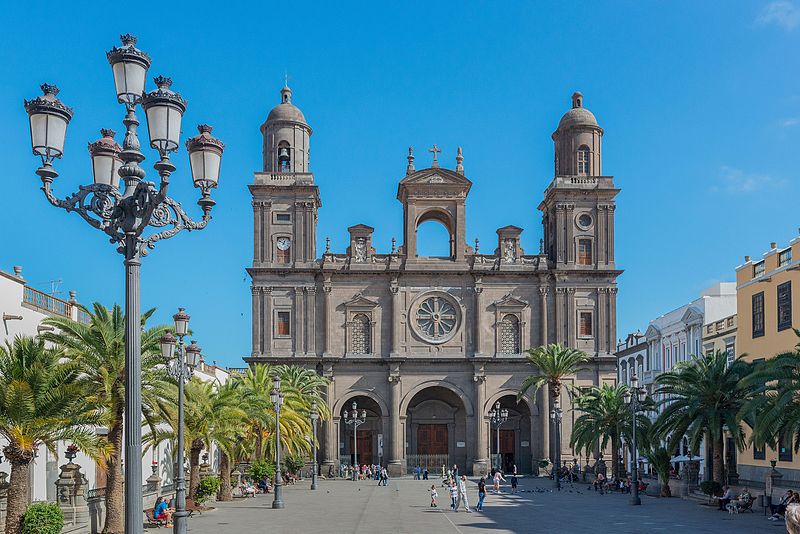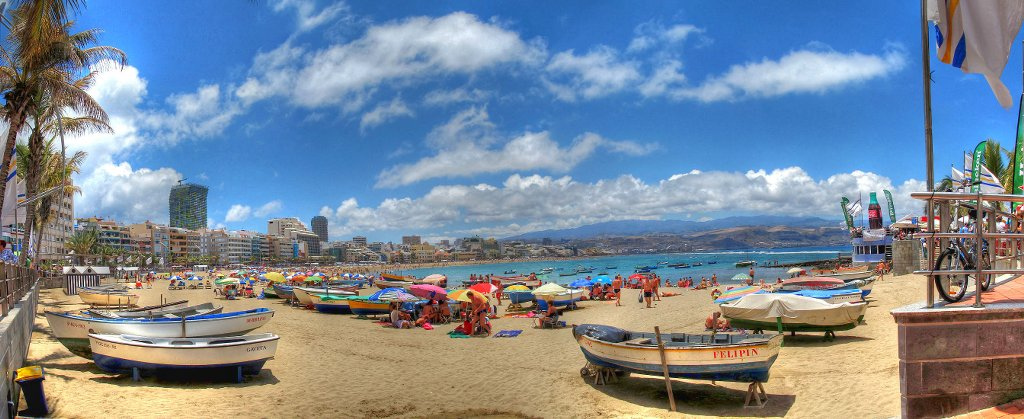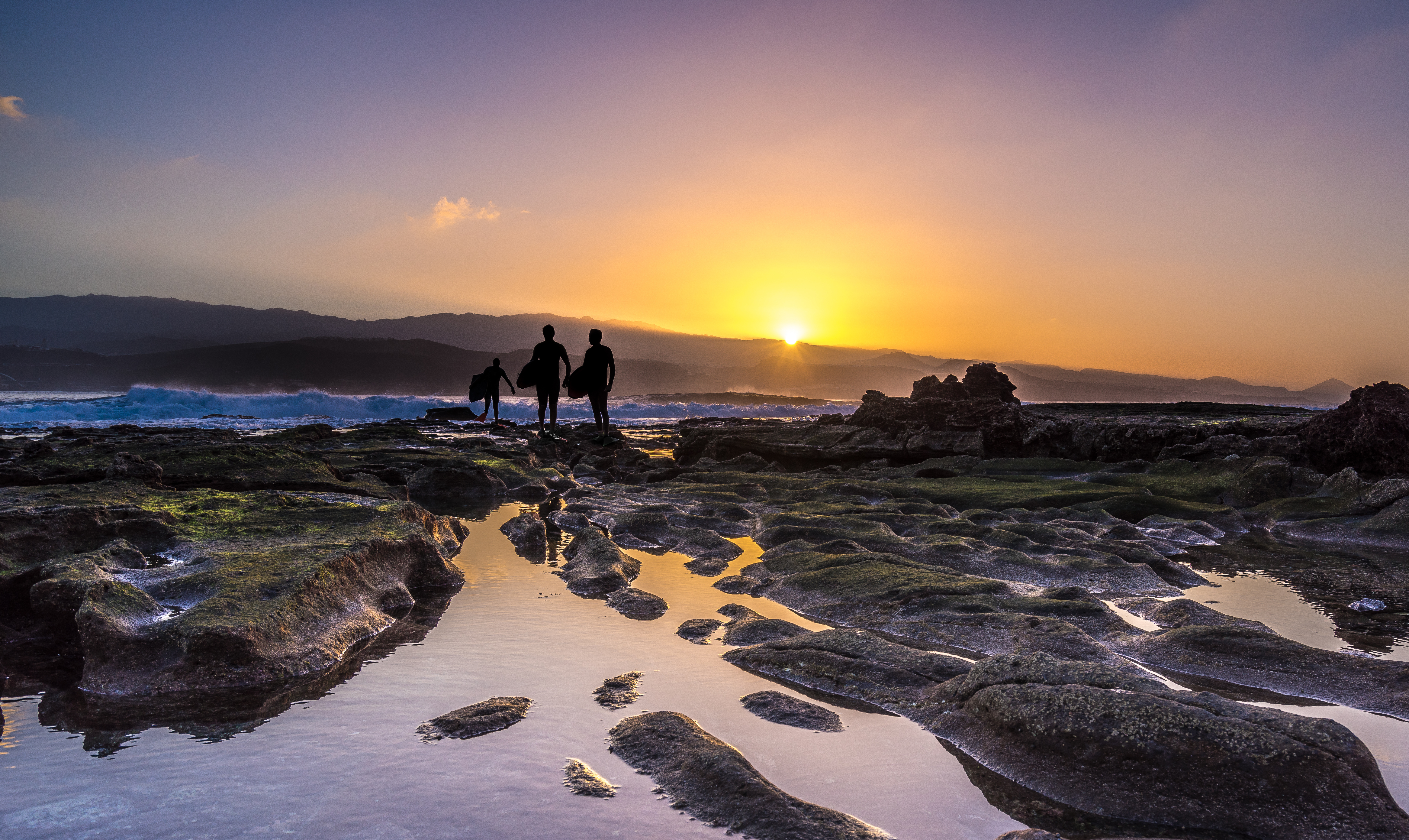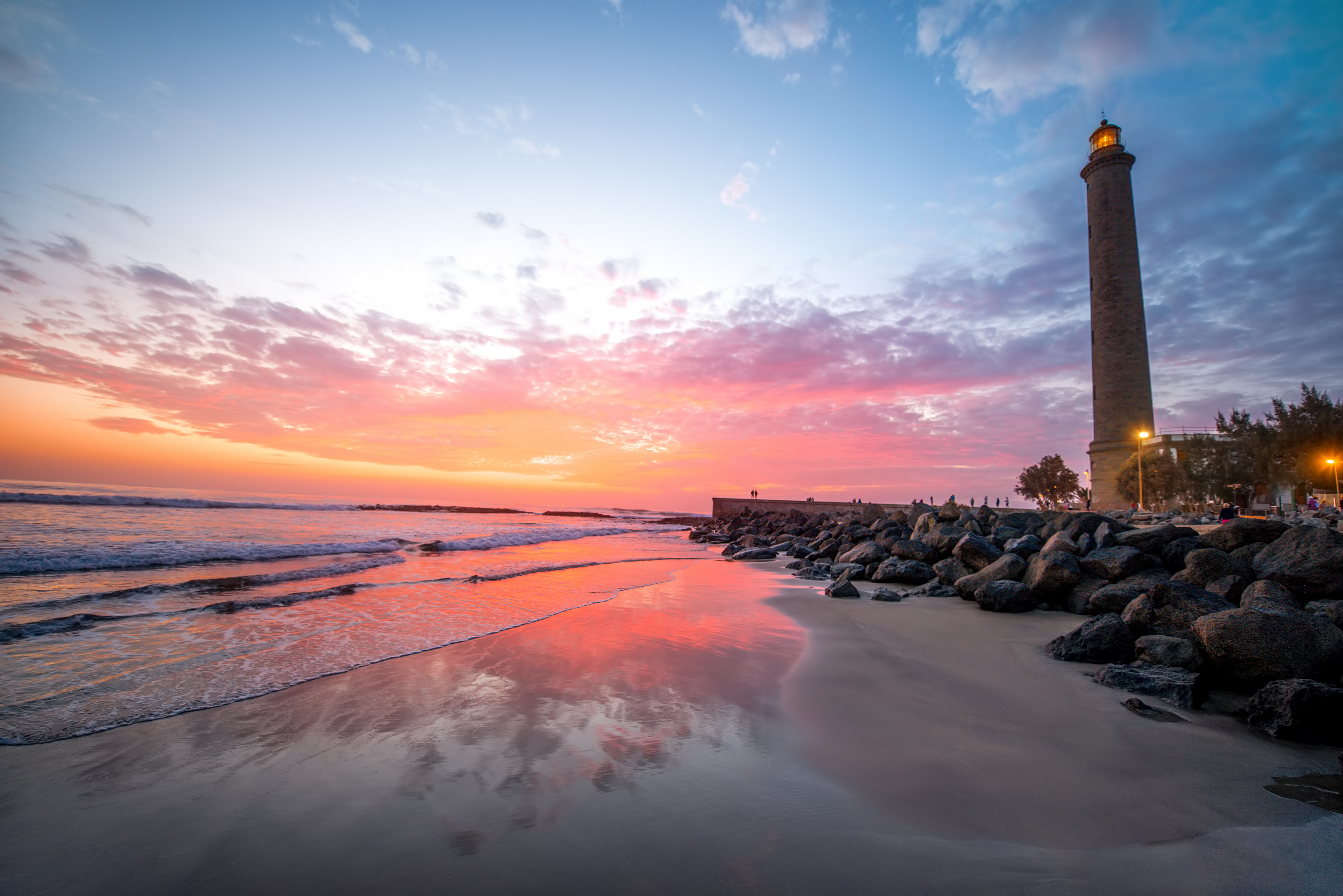Las Palmas

Las Palmas: historic town bordered by beaches and its great harbour
The town of Las Palmas de Gran Canaria is the capital of the province of the same name and of the island of Gran Canaria, one of the Canary islands. The town of Las Palmas is located in the north-east of the island of Gran Canaria, where it extends for 6.2 miles (10 km) from La Isleta peninsula in the north to the hinterland valleys in the south. Las Palmas is a spread-out town bordered by beautiful golden sandy beaches and with a dynamic harbour.
Las Palmas has a rich historical heritage shared between different districts and overlooking magnificent landscapes. This lively town is internationally known for its festivals, like the carnival weeks in February. In Las Palmas you can also enjoy the Cinema Festival and Canary Islands Music Festival. Currently, tourism activities are the economic motor of Las Palmas, attracting thousands of tourists from all over the world every year.
Look for your holiday villa in Las Palmas here!
Las Palmas and its mild climate
Las Palmas owes its mild temperatures to the moderating effects of the ocean. Temperature variations between summer and winter, as well as between day and night, are minimal. Average summer temperatures vary between 20 and 27 degrees, and in winter between 15 and 21 degrees. The region is well known for drought. In summer, it hardly ever rains; in winter, rain is very scarce.

Las Palmas, a spread-out town with different districts
As a visitor to Las Palmas, which extends for 6.2 miles (10 km), you can walk through the town and discover the interesting places in the different districts in the south, then go north, from the old to the modern: the historic Vegueta and Triana districts, the garden town Ciudad Jardin, the Santa Catalina district and the La Isleta peninsula. The historic districts of Vegueta and Triana are part of the old town of Las Palmas, and were rebuilt in 1478 by Juan Rejon, the Catholic Monarchs’ governor. The first to colonise the island settled in these districts, which gave them their partially colonial Andalusian character.
The old Vegueta district in the south of Las Palmas
- With its magnificent patios and balconies, the Vegueta district has preserved its 15th and 16th century colonial architecture. – In the centre of the old town, you can visit the magnificent Plaza Santa Ana, lined with palm trees and built at the end of the 15th century by the Spanish monarchs. This square is still Las Palmas’ visiting card today.
- The most remarkable building on the square is Santa AnaCathedral with its two imposing towers. It took 500 years to build this cathedral. Despite a blend of Gothic and neo-classic styles, the building gives a unified impression. By taking the lift, you reach a panoramic terrace from which you have a splendid view over the town of Las Palmas. During your visit, you must not miss the high altar and the treasures of the church kept by the Diocesan Museum of Sacred Art.
- On the other side of the square, you have the town hall. With its many paintings and statues, it is almost like a museum.
- Behind the cathedral, you can enjoy the atmosphere on the Plaza de Pilar and in Calle Los Balcones, where beautiful mansions are part of the Centro Atlantico de Arte Moderno, the Atlantic Modern Art Centre. It is worth having a look at the magnificent historic rooms with their bold avant-garde works of art.
- Casa de Colon, former palace of the governors of the island, where Columbus came to stay when in the Canary Islands, currently houses a museum which enables you to relive expeditions to the New World. You will discover some of Columbus’s different objects such as his maps, models, fragments of logbooks etc.
- The Museo Canario has interesting remnants of the Guanche culture, the name of the inhabitants of the Canary Islands during the pre-Columbian period. This museum is of immense archaeological and anthropological value.

The old Triana district in the centre of Las Palmas
A little further north in Las Palmas, you will reach the old Triana district along the coast, where you can stroll in the pedestrian shopping street. Among the traditional shops and the international chain stores, you will discover a lot of buildings in the art nouveau style. You will undoubtedly enjoy seeing the protected monument GabineteLiterario and the Perez Galdos theatre, decorated with art nouveau paintings.
Once siesta time is over, Plaza de las Ranas becomes an outdoor living room. The terraces under the palm trees fill up, and the stairs of the library serve as a balcony from which you can watch passers-by.
Further north, you have the garden town or Cuidad Jardin, a residential area in Las Palmas where the buildings are characterised by a blend of styles. In the green area of the town of Las Palmas, you will find the Rubio and Dorama gardens with their fountains, palm trees and dracaenas. Don’t forget to visit the Las Palmas Zoo and the Pueblo Canario, the Canaries village with its paved square where there are folk shows every Sunday morning. The white houses on this square are famous for their wooden balconies.

The modern Canteras-Catalina district in the north of Las Palmas
In the narrowest part in the north of Las Palmas, you will find the Canteras-Catalina district with, on its west side, the Paseo de la Canteras promenade along one of the most beautiful beaches in the world, Playa de la Canteras. In Santa Catalina, you will find the best restaurants, where you will be able to taste delicious fish and exotic fruit dishes.
On the east side, you will find the great harbour, Puerto de la Luz. This port dating, back to the 19th century, is nowadays very busy with tourists. The port itself and Alcaravaneras beach are the biggest tourist spots in this district of Las Palmas.
La Isleta peninsula, the most northerly point of Las Palmas.

The most northerly point of the town of Las Palmas ends in the La Isleta peninsula, a military and maritime zone where there is still a thing or two to discover.
Le Castillo de la Luz, dating back to the 16th century, was built at that time to protect the population of Las Palmas against pirate attacks. Today, several cultural events take place in this castle.
Among the avenues and modern residences, you will find the covered market, Mercado del Puerto, a cast-iron building in the art deco style.
Las Palmas, a magnificent holiday town with a well-preserved historical heritage, one of the most beautiful beaches in the world, a marina and livelycarnival weeks: a dreamlike destination for those who like holidays with variety, the best restaurants and a lot of sun.

